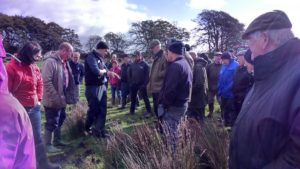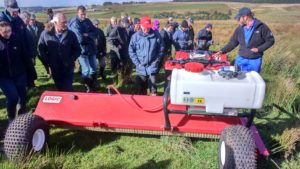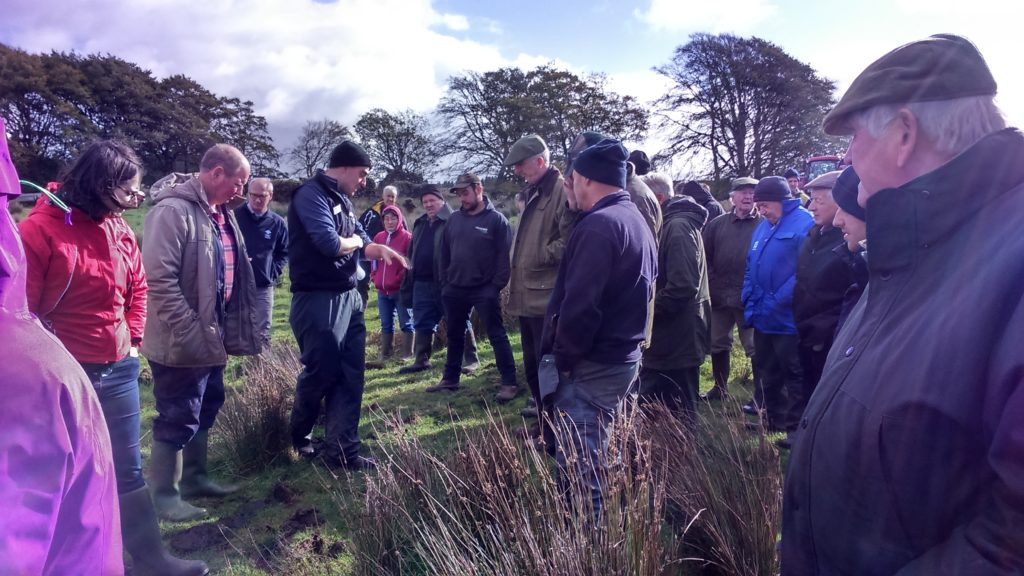Optimising Farm Nutrients – Winning the battle against rushes in Upland systems – event summary
5 October 2017Grassland in Scotland has seen a significant increase in rush infestation with rushes establishing in fields where there has not been a problem in living memory. This meeting laid out the foundations for a series of meetings over the next 3 years to look at the economics and effectiveness of various rush control strategies.
Over 40 people in attendance were given an overview of the of the rush plant and common methods of control including fortifying your grassland by ensuring soil conditions and nutrient availability are optimised by effective drainage and liming for optimum soil pH status. You can read the presentation slides from this part of the meeting here. Following this session, there was a visit to trial plots to review the effectiveness of 7 different control methods, including the costs associated with each method. Suggestions for further trial plots were also taken. Future meetings will analyse the long term benefit of each method.
The meeting concluded with a forestry presentation on forestry options for marginal upland ground and presentation slides on this topic can be found here.
Key Take Home Messages
- The foundation of effective rush management is good drainage. Good drainage reduces the risk of sward damage by poaching or compaction and minimises the occurrence of wet conditions which suit germination of rush seeds.
- Maintain soil pH to encourage good grass growth allowing grass to be more competitive with the rush.

- Soil sample to determine soil P and K status. Maintain at moderate for productive grasses and clover to effectively compete.
- Good grazing management is the key to preventing rush and weed infestation. Avoid excessive winter grazing to prevent poaching the ground creating bare patches where seeds can establish.
- Topping or cutting of rushes should take place before the seed produced that year becomes viable i.e. late spring or early summer, preventing rushes from setting seed.
- Chemical control works best when the rush plant is actively growing – May or June, with best results before seeding.
More photos from the event are available on our Facebook page album found here.
Information leaflets that were available at the meeting are available to download below.
- Technical Note (TN643): Weed Management in Grassland
- This technical note describes the most important weeds of grassland and their management. It is designed to be of value to low and high conventional input grassland systems, as well as potentially to organic systems.
- Topics: Crops and Soils
- Technical Note (TN656): Soil Information, Texture & Liming Recommendations
- • Web based access to information on your soils on your farm is described. • Soil texture classes of mineral soils are described and identified by hand texturing. • Liming recommendations for different soils and managements are tabulated.
- Topics: Soils
- Better Returns Programme – Management & Control of Common Rush
- Topics: Climate Change
Sign up to the FAS newsletter
Receive updates on news, events and publications from Scotland’s Farm Advisory Service


